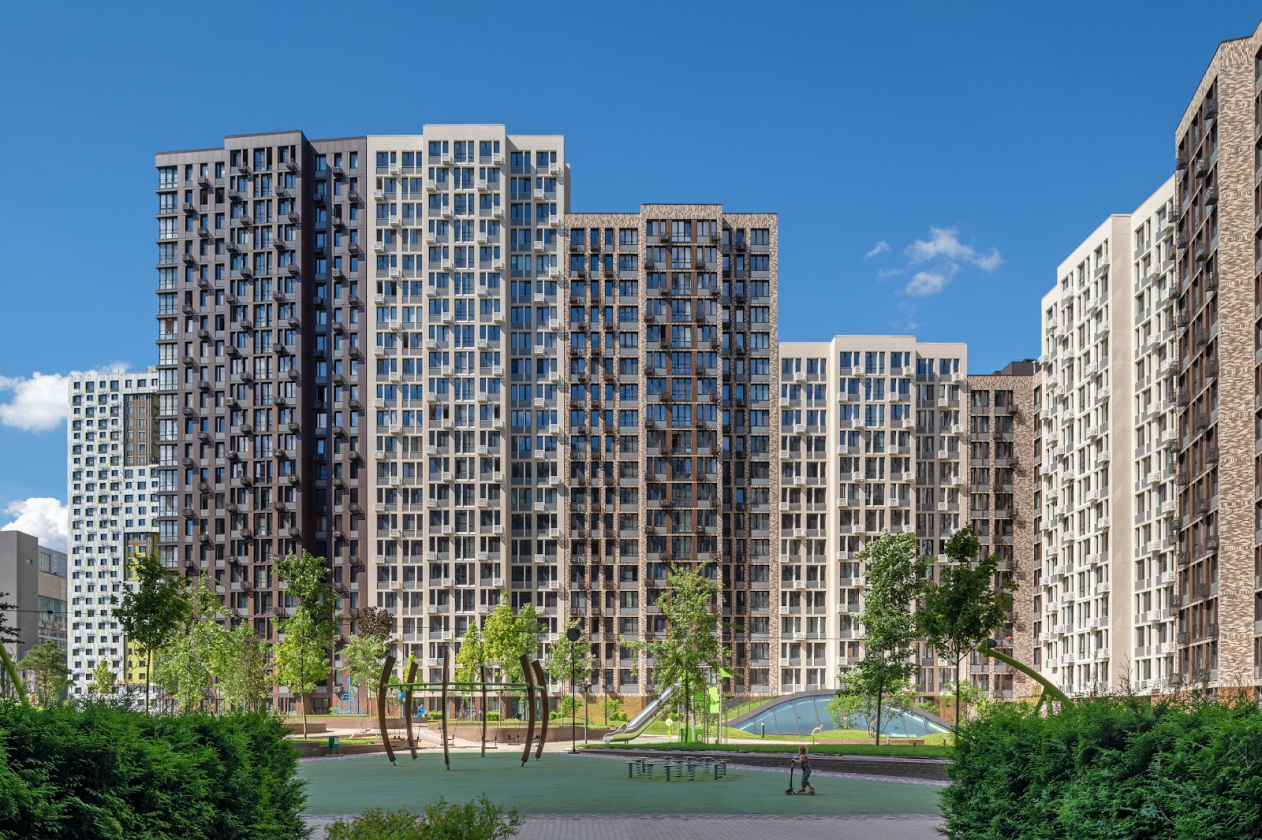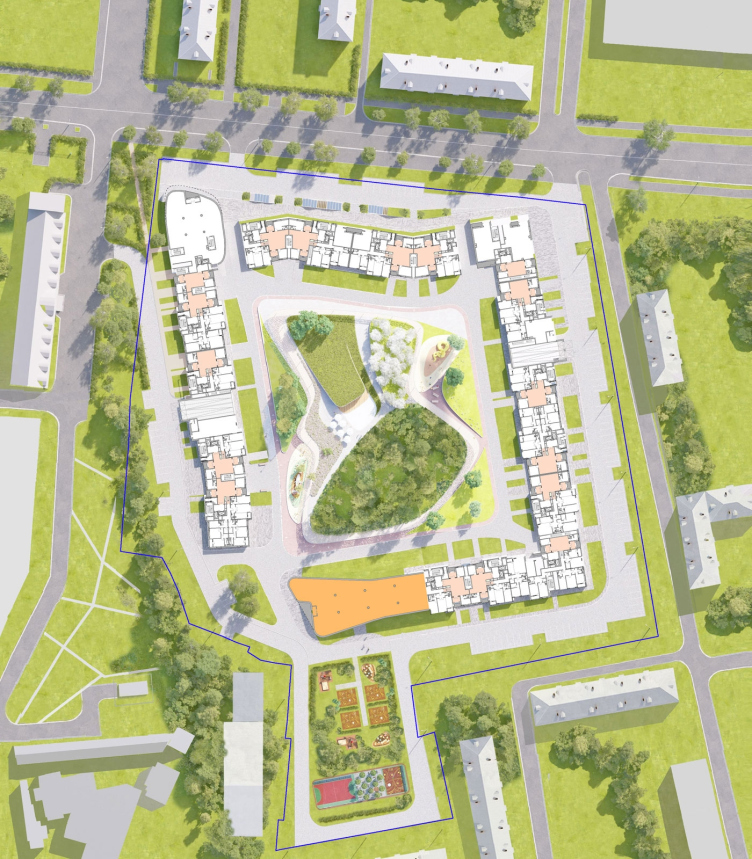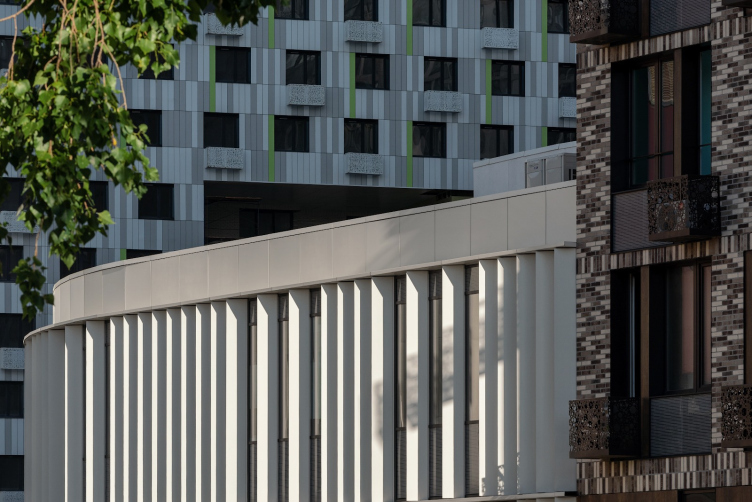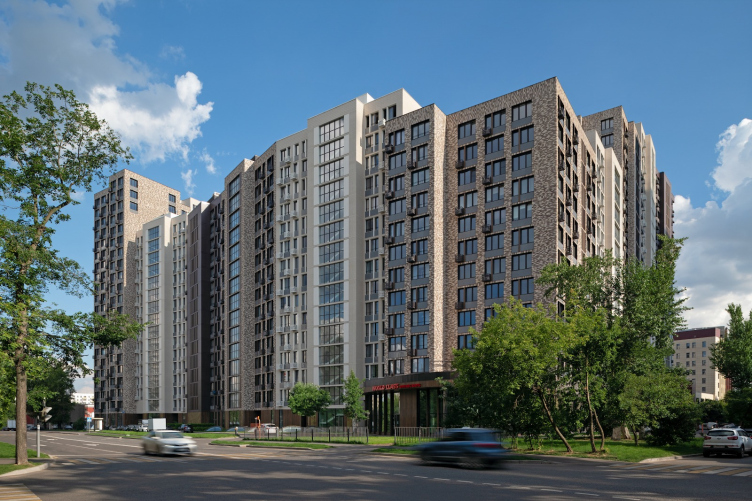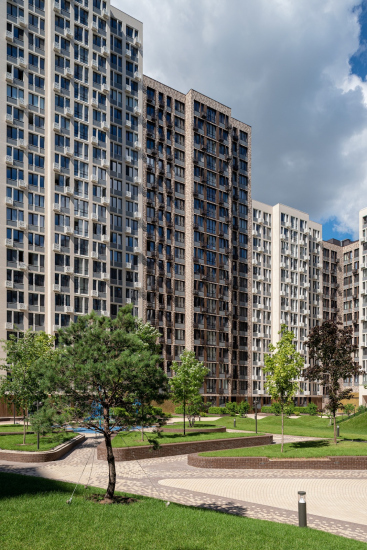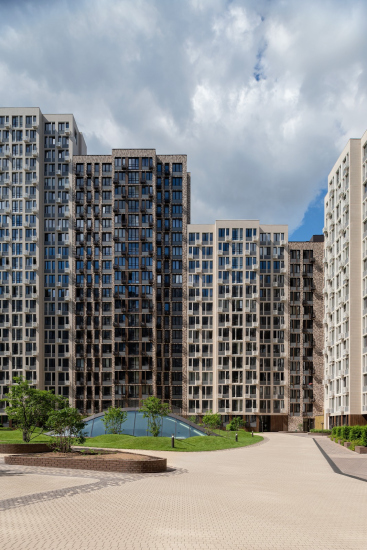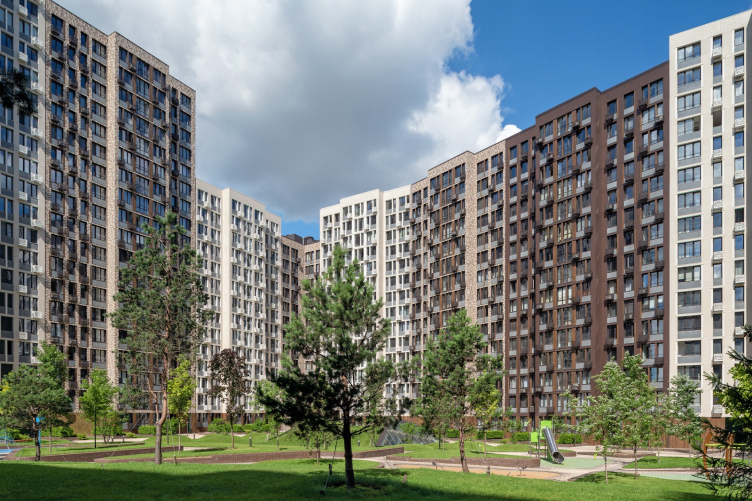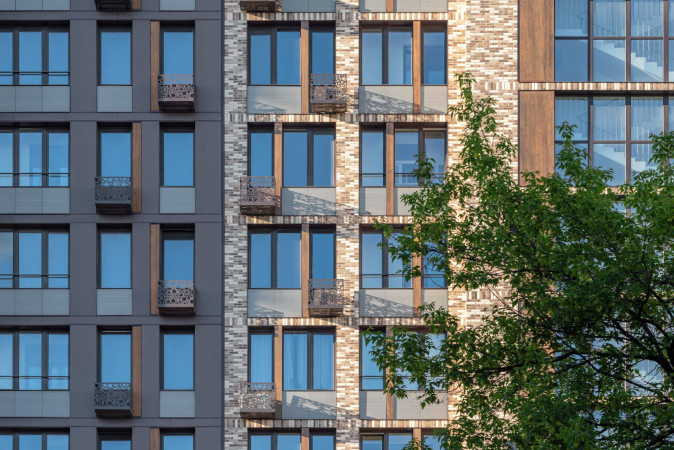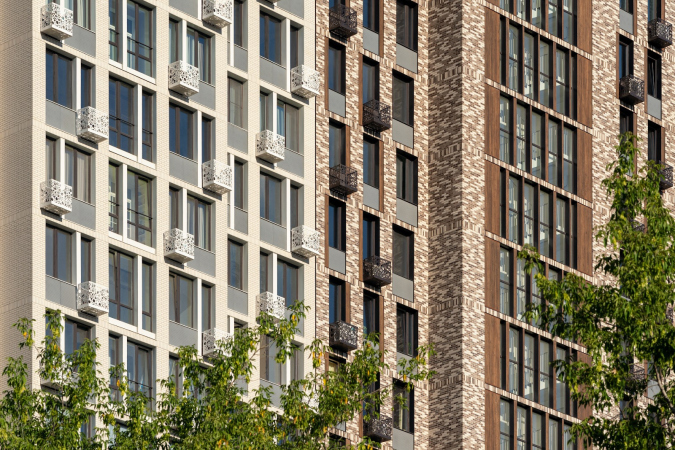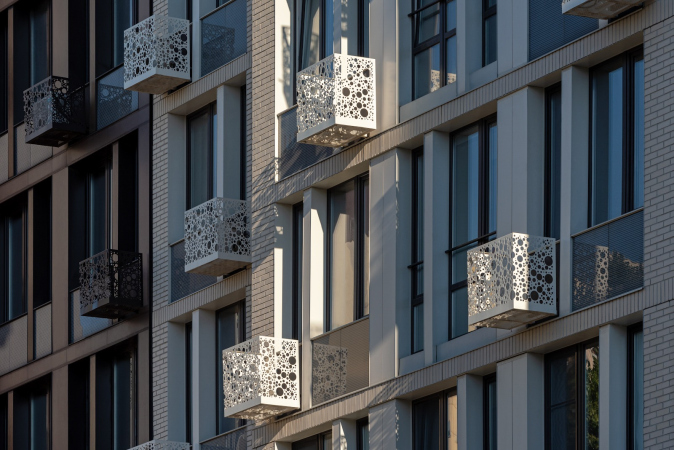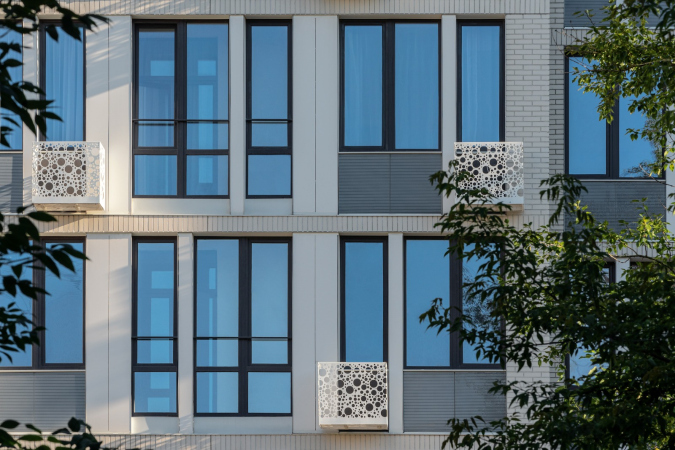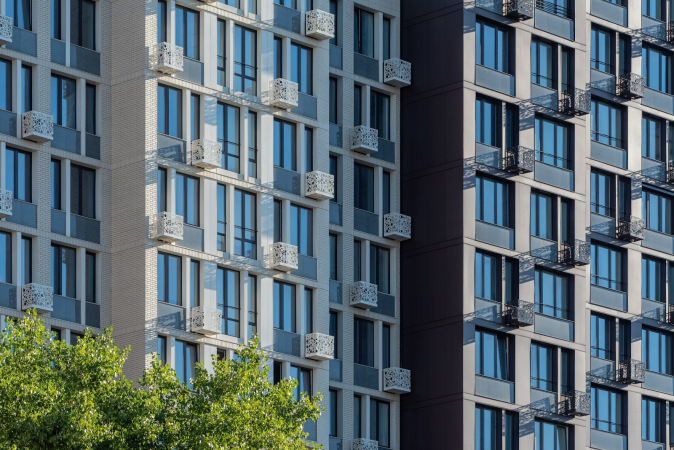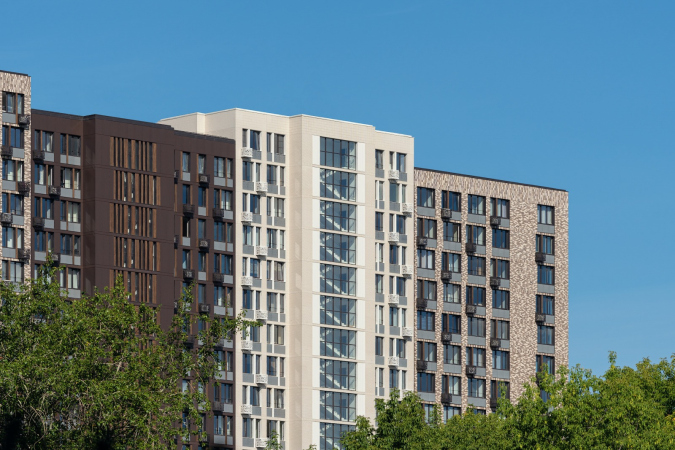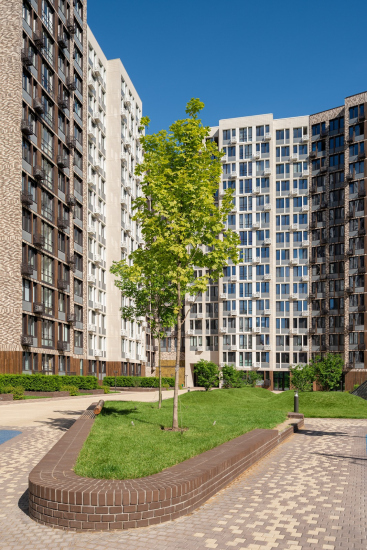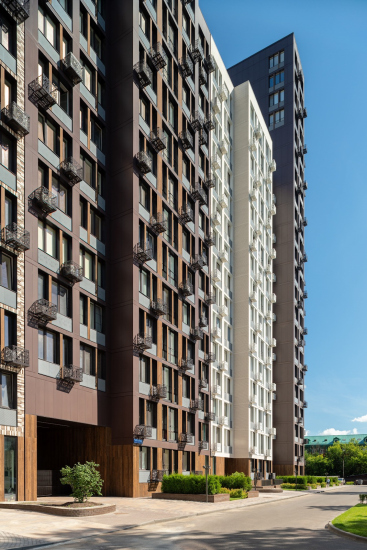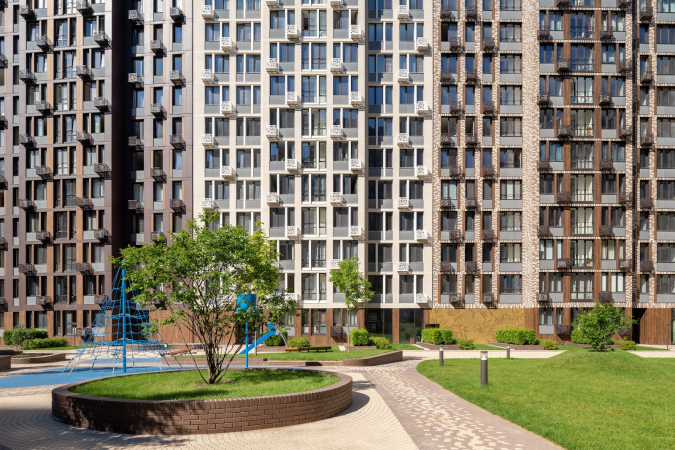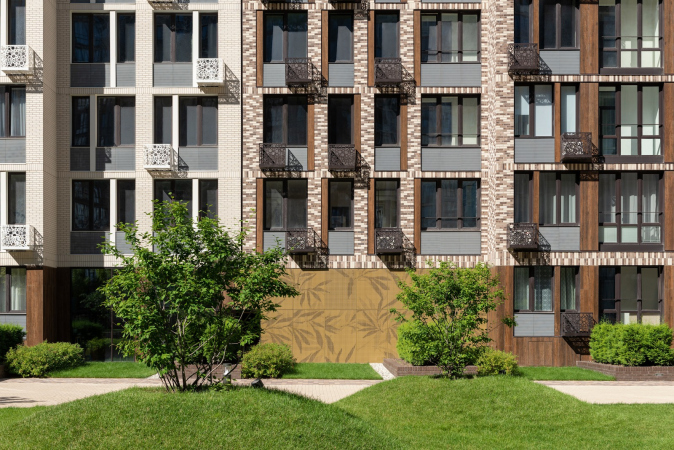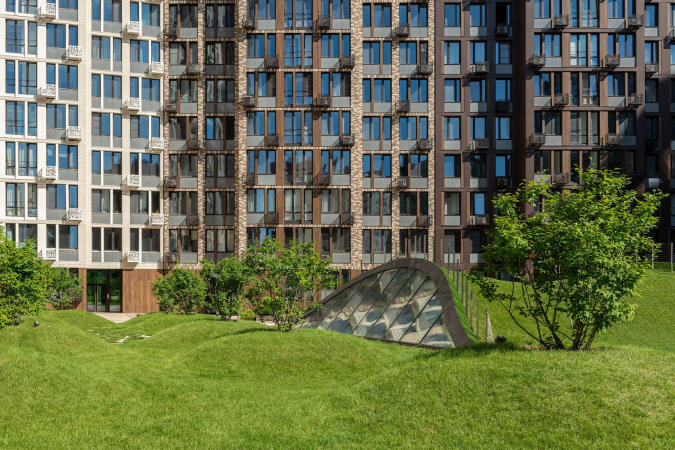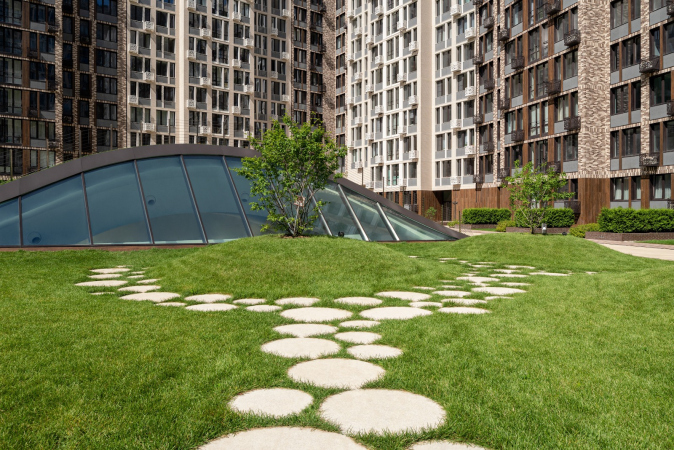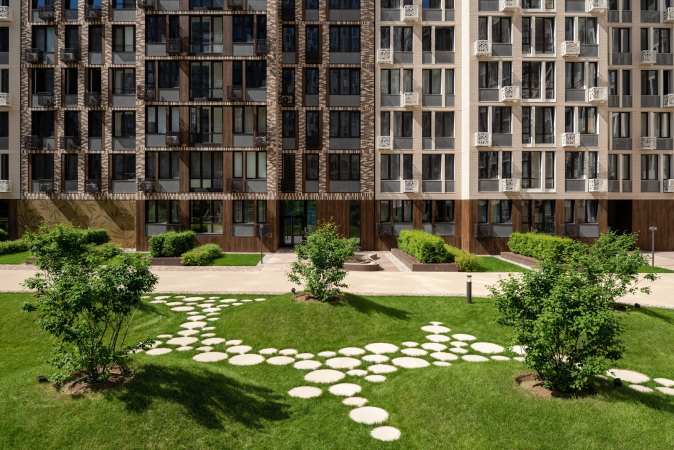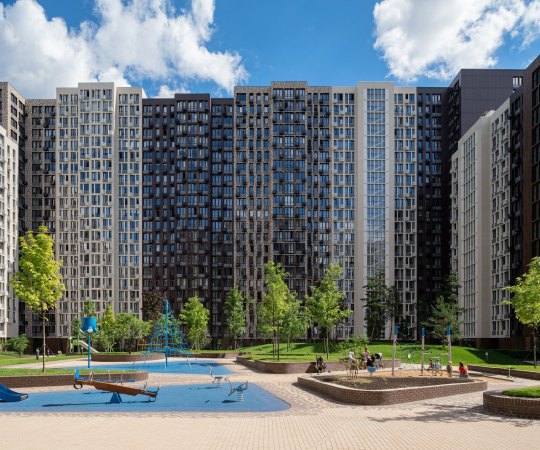The location is also advantageous in terms of its surroundings: 1147 is situated exactly on the border between the quiet and peaceful “post-Stalin” district and the territories of active modern construction on the former industrial grounds closer to the Sokolniki Park. In fact, it marks this boundary by being there. The comfortable environment north of Malomoskovskaya Street is formed by blocks of brick five-story houses with green yards alternating with boulevards. The panel prefab nine-story houses and 14-story towers make the landmarks of the streets, while schools and kindergartens make spatial breaks. The district is pretty old; its infrastructure – the shops, the educational institutions, and the medical facilities – is highly developed, and the new complex successfully complements it.
The housing complex «1147»
Copyright: ADM
The new complex, designed by ADM architects, is situated on a land site next to the “LAIM” housing complex, designed by the same architectural company in 2009; its construction is nearly completed, but is still going on, while 1147, whose construction started earlier, in 2014, has already been put into operation. Its architecture responds to the location of the complex next to old brick city blocks, even though it does raise the overall height of construction on this area.
Eighteen residential sections stand along the perimeter of the land site, forming a closed contour with just a single break at its southwest corner, where a kindergarten is situated. The access to the yard for the residents and emergency vehicles is provided by a few arches in the construction perimeter, while the closed contour strengthens the impression that the yard is private, accessible only for the residents, and, of course, closed to private cars. What the complex gives to the city is the landscaped grounds on its outer contour.
The housing complex «1147»
The housing complex «1147»
The height of the buildings varies from 9 to 22 floors, and the architects deliberately accentuated the different height of the volumes, trying to turn the complex into a semblance of a small city, composed of vertical houses of different shades of color. The architects livened up the plastique of the complex by a multitude of risalits, which subjugated the facades to a rhythmic alternation of ledges and recessions. The four sections from the side of the Malomoskovskaya Street come together to form a zigzagging wave, whose floor plan looks a little bit like that of the neighboring “LAIM” – if you look from this vantage point, it seems as though the house “grows through” and unfolds in front of our eyes like a lamellar partition. At the same time, however, the volume in the northwest corner, which is the closest to the avenue, is not really big – 12 stories high – and its scale responds to that of the Soviet brick tower standing across the street.
The housing complex «1147»
Copyright: ADM
The authors deliberately fracture the front of the sections, revealing its compound nature – but just as studiously they emphasize that the complex is still a single whole: with the help of materials and natural colors, and with the help of alternating plastique and rhythmical stylistic devices. One can single out three main themes: a light-colored façade of Klinker tiles, a mottled brick façade, and a satin-finish façade of ceramic tiles. The same regularity of repetitions can be traced in the proportions of the buildings. The austere grid of the window apertures briefly gives way to panoramic glazing and slender verticals of ceramic panels, which imitate wood grain, and then again prominently shows on the facades.
The housing complex «1147»
Copyright: ADM
The overall warm color palette is dominated by natural shades of brown, woody, milky white, caramel and graphite. Against this background, the contrast of materials is clearly manifested – from smooth to textured, from fine-grained to emphatically enlarged.
There are two subtle, seemingly insignificant details in this variety of architectural narratives, but it is they that largely determine the nature of the architecture. The first one is openwork-lace metal baskets for air conditioners, made according to ADM’s original project. The second is the design of the first floors in a unified manner. Their decoration is dominated by large-format ceramic panels – with a cozy and warm wood texture, with or without patterns, smooth and perforated.
ADM architects pay special attention to creating a human-friendly living environment. Their projects lay main stress on the bottom floors, entrance groups, and organizing the adjacent territories. The housing complex on the Malomoskovskaya Street is no exception. On the territory of the yard, on the roof of the underground parking garage, there is a landscape park with large-sized trees and geoplastics. In the spots where pines are planted – trees with deep roots – the ceiling of the parking lot is locally lowered by almost a meter. Some of the hills above are arranged over the entrances to the ramps, as well as on the roofs of other structures.
One of such green slopes with skylights in it “conceals” a fitness center and a 25-meter swimming pool. In winter, its operated roof is transformed into a big snow slide. The pedestrian lanes are separated from the bicycle ones by green plants. The hills, the lawns, and the coniferous and deciduous trees planted on them zone the space, creating secluded nooks for relaxation and reading books next to playgrounds and sports fields. At the same time, nobody is getting in anyone’s way.
The bottom floors are occupied by stores, cafés, and, of course, entrance groups with spacious lobbies. The cafes and shops have independent entrances from the outside. The complex features a standard set of apartments with thought-out layouts – it must be noted that by the moment the complex was put into operation in 2019, all of the apartments were already sold out. This huge success can be explained by both the location in a popular and highly developed area next to two metro stations, and many other conveniences that are offered to the residents: from a kindergarten, a fitness center, retail in the bottom floors, and a vehicle-free yard, to the carefully designed detailed facades, whose diverse structure is based on natural colors and materials.

